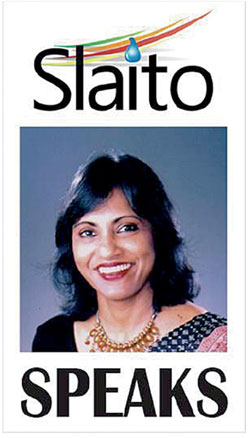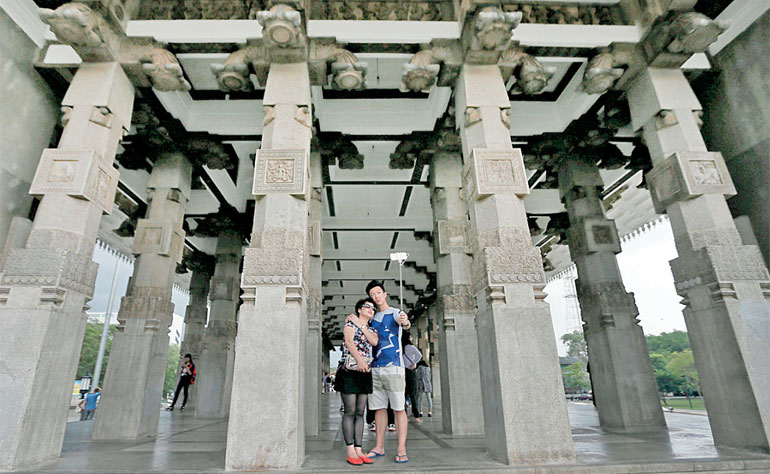Monday Dec 08, 2025
Monday Dec 08, 2025
Thursday, 25 February 2016 00:02 - - {{hitsCtrl.values.hits}}
The Daily FT today starts a new series featuring Sri Lanka Association of Inbound Tour Operators (SLAITO) members on current issues related to the tourism industry. Following are excerpts of an interview with Jetwing Travels Ltd. Managing Director Shiromal Cooray
Q: What has changed in Sri Lanka tourism post 2009?
A: It would be easier to say what hasn’t changed post 2009. May 2009 was what the tourism industry was hoping for almost three decades. The visitors began looking at Sri Lanka in a new light; suddenly Sri Lanka became the hot spot to travel. Journalists came in droves and wrote about the hidden treasures of this beautiful island and we became the ‘in’ place to visit. Tour operators began to take a new look and began spending money to promote the destination.
Airlines increased their frequencies and new airlines commenced operating to Sri Lanka. Entrepreneurs who were reluctant to invest were now fighting to build hotels, Sri Lankans who went overseas for employment began to return. The Chinese began visiting the country.
Well, the list can go on but more importantly, it gave those players who were die-hard hoteliers, destination management companies, transport suppliers and guide lecturers a smile on their faces and a spring in their step. They became confident to invest, to modify and refresh their offers to suit the 21st century. They were willing to up their game to compete on an even playing field with the new entrants and the foreign investors. The bottom lines of the companies began to turn positive and tourism almost overnight became the golden goose.
Since 2009, the infrastructure has improved, the two highways being a case in point. The much needed domestic air transportation services have commenced operations, many locals are confidently opening their homes to take in paying guests, more young adults are returning to tourism as a possible career option, tourist arrivals and the revenue is on the rise.
Q: Did Sri Lanka as a destination capitalise fully the opportunity?
A: Well, perhaps not. However, through the visiting journalists’ programs, etc. and by the sheer fact that the hostilities had ended Sri Lanka got a lot of positive media. This naturally increased the numbers post 2009 as we know. Unfortunately, the Western countries started talking about human rights violations, etc. which negatively impacted the volumes from these countries. This was amply compensated by the Chinese market as many promotional efforts were targeting this market.
 Tourists take a selfie at Sri Lanka’s Independence square in Colombo.Tourist arrivals in Sri Lanka jumped 24.3 percent year-on-year in January, government data showed, with the number of foreign visitors rising for the 81st straight month since a nearly three-decade-long civil war ended in 2009. REUTERS/Dinuka Liyanawatte
Tourists take a selfie at Sri Lanka’s Independence square in Colombo.Tourist arrivals in Sri Lanka jumped 24.3 percent year-on-year in January, government data showed, with the number of foreign visitors rising for the 81st straight month since a nearly three-decade-long civil war ended in 2009. REUTERS/Dinuka Liyanawatte
Also, if larger numbers came in soon after we may not have had the infra-structure to handle the sudden influx and the country would have earned a bad image. In hindsight, this progression was perhaps better. For instance, we saw how the country was not ready for the Chinese tourist. Our product needed to be modified, we did not have sufficient language speaking guides, there were many Chinese nationals who came in and started tour operation, guiding, selling gems and jewellery illegally. These things happen when we do not have systems and processes in place and can be detrimental.
At present, our relations with the Western governments have improved and we can see a very healthy growth from these markets. It is still not late as we seem to be one of the few countries that is ‘safe and secure’ for a visitor. If we have our marketing and advertising in place ASAP, tourism can contribute significantly to Sri Lanka’s economy.
Q: Has the growth in earnings gone to the village level?
A: It most certainly has. As accommodation providers, suppliers of services to hotels and travel companies, local guides, providers of local experiences, etc. Hotels have also come up in various remote locations enabling young adults from these areas to share in the bounty.
Q: Has Sri Lanka tourism made any significant impact to local GDP, if so by how much?
A: Yes, it has. In addition to the tangible impact it has made a huge indirect impact to the economy as many sectors are benefitting by it. Construction, transport providers, vehicle importers, raw material suppliers, farmers, excursion providers, etc.
Q: Are we running a ‘marathon’ or a ‘sprint’ or ‘walking race’ when it comes to tourist infrastructure development + promotional activities?
A: At the moment it seems a walking race and perhaps the tortoise might win the race. However, we do need to get these in place and the promotional activities are an absolute must! We must also educate our fellow Sri Lankans that tourists are here not to be fleeced and that they too have to be respected as much as we must inform the tourists that they need to acknowledge and respect Sri Lankans and our customs. If we do not do this we face the risk of being another India or Thailand or Brazil.
Q: How do you rate Sri Lanka arrivals and tourism earnings vis-à-vis competitors like Thailand, Maldives and Malaysia?
A: We have improved greatly but we have a long way to go. With more promotional activities and international brands coming in, the numbers will definitely increase. We need to improve our infrastructure and offer more activities if we are to increase tourism earnings.
Q: Any reason for the difference in numbers and how do you bridge the gap in unfavourable instances?
A: We need to market the destination! We now have a diverse product. It is no longer a ‘cheap’ destination. We have cheap, average and high end products on offer. We also have so many attractions, cultural sites, natural landscapes that need to be promoted. However, we need to be ready to receive these large numbers too and have mechanisms to control in a positive way.
An example is the Yala National Park. It is a fact that 20% or so of the foreigners who visit it generates 80% of its revenue. However, as the park management has not changed over time, unless immediate action is taken to remedy it we stand to have visitors wanting to avoid a visit. This can happen to other attractions too, unless we take a good look at each of them.
Q: What should be the role played by Sri Lanka Tourism and Government to take us to the next level?
A: They must let the private sector drive it. The various bodies must assist development and not be a deterrent. All other departments like the Wildlife, Cultural Ministry, Immigration Dept., Ports Authority and other related departments must work closely with the Tourism sector as both can benefit if they work together. Tourism must be allowed to have the flexibility to do promotions as and when required rather than having to follow time consuming and cumbersome procedures. Of course accountability is important, but within stipulated parameters the flexibility to act should be there.
The law enforcement agencies should be given the authority to take action whenever there are violations.
Q: Will Sri Lanka tourism earnings be greater than competing countries like Thailand and Malaysia? If so by when at the current pace?
A: We can never compare ourselves to Thailand and Malaysia. They have a different kind of tourism; they are bigger countries and have mature products. Ours is a little island but a breathtakingly beautiful one. We need to manage the numbers whilst maximising earnings as we should not allow the character of Sri Lanka to be destroyed.